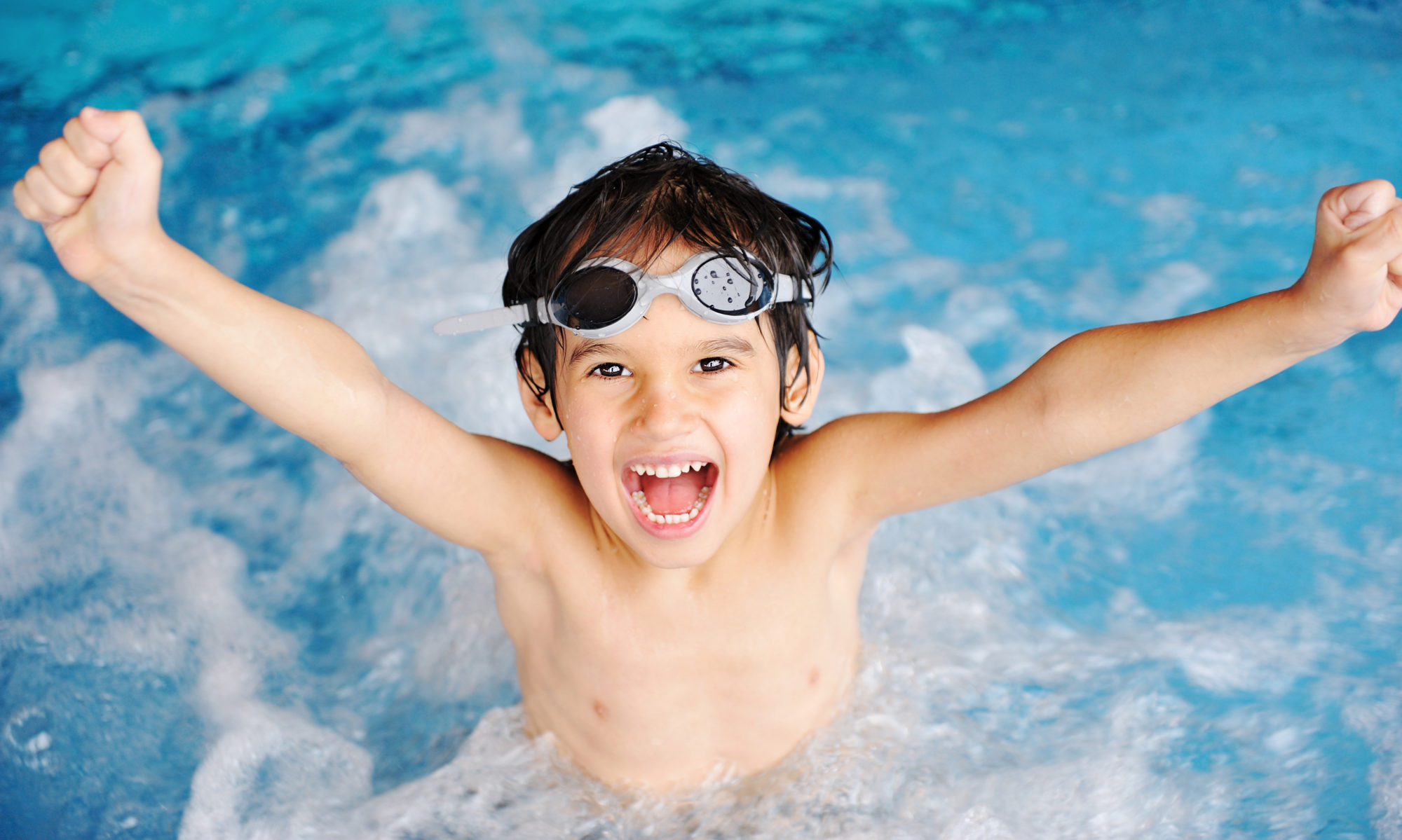When you’re teaching your kids to swim, water safety is the most important thing for them to learn. Here are three things to teach them and three things for you to watch for to help keep them safe.
3 Things to Teach
These three things are critical for your child to know, and they’re easy to teach them.
Teach your kids the rules of the pool.
Show your child where the pool rules are posted and explain them. Quiz him. Ask him to teach you the rules. Review them every time you arrive at the pool until they’re second nature to your child.
Teach your kids about the risks.
Don’t be afraid to explain safety risks to your child. Be calm and direct. You don’t want to make him unnecessarily afraid of the water, but you do want him to respect it and the safety rules. Explain what behavior is unsafe, why it’s dangerous, and how to choose different safe behaviors.
Teach your kids by example.
Set an example for your child. If kids aren’t allowed to jump in, neither should you.
3 Things to Watch
These three things are critical for you to pay attention to when your kids are in and around the water. (They’re important for you to watch for in yourself and other adults, too.)
Watch for hyperthermia as well as hypothermia.
In the same way that kids’ bodies lose heat rapidly in a cold pool, they can overheat quickly in a hot tub. Hyperthermia can cause weakness, dizziness, confusion, and loss of consciousness. Your child may experience the effects of the heat well before an adult would.
Watch for wandering into deep water.
When your child feels comfortable in shallow water, watch to make sure he doesn’t move to deeper water than is safe for his skill level. Kids like to use the wall to move and like to bounce. Both of these can accidentally take them to deeper water than they can handle.
Watch for shallow water.
The two most serious water injuries are drowning and spinal injuries. Most spinal injuries result from dives in shallow water. Always make sure you know how deep the water is before diving. Don’t let your child dive in any way in water that’s less than six feet deep. Don’t let your child dive headfirst in any water that’s less than nine feet deep, or twelve feet deep if your child is diving from a board.
For more safety information, see:
- 6 Things You Must Do to Keep Your Kids Safe in the Water
- 5 Ways You’ll Know Your Kids Are Water-Safe
- 3 Things Water Safety Isn’t
- 7 Ways to Prepare for an Emergency When You’re Teaching Your Kids to Swim
- 4 Safety Features Every Pool Has to Have
- How to Make Heading for Safety Second Nature When You’re Teaching Your Kids to Swim
- What to Expect When You’re Teaching Infants to Swim
- What to Expect When You’re Teaching Toddlers to Swim
- Water Safety Tips for Grownups
- Weather and Water–Swimming Safety Tips
